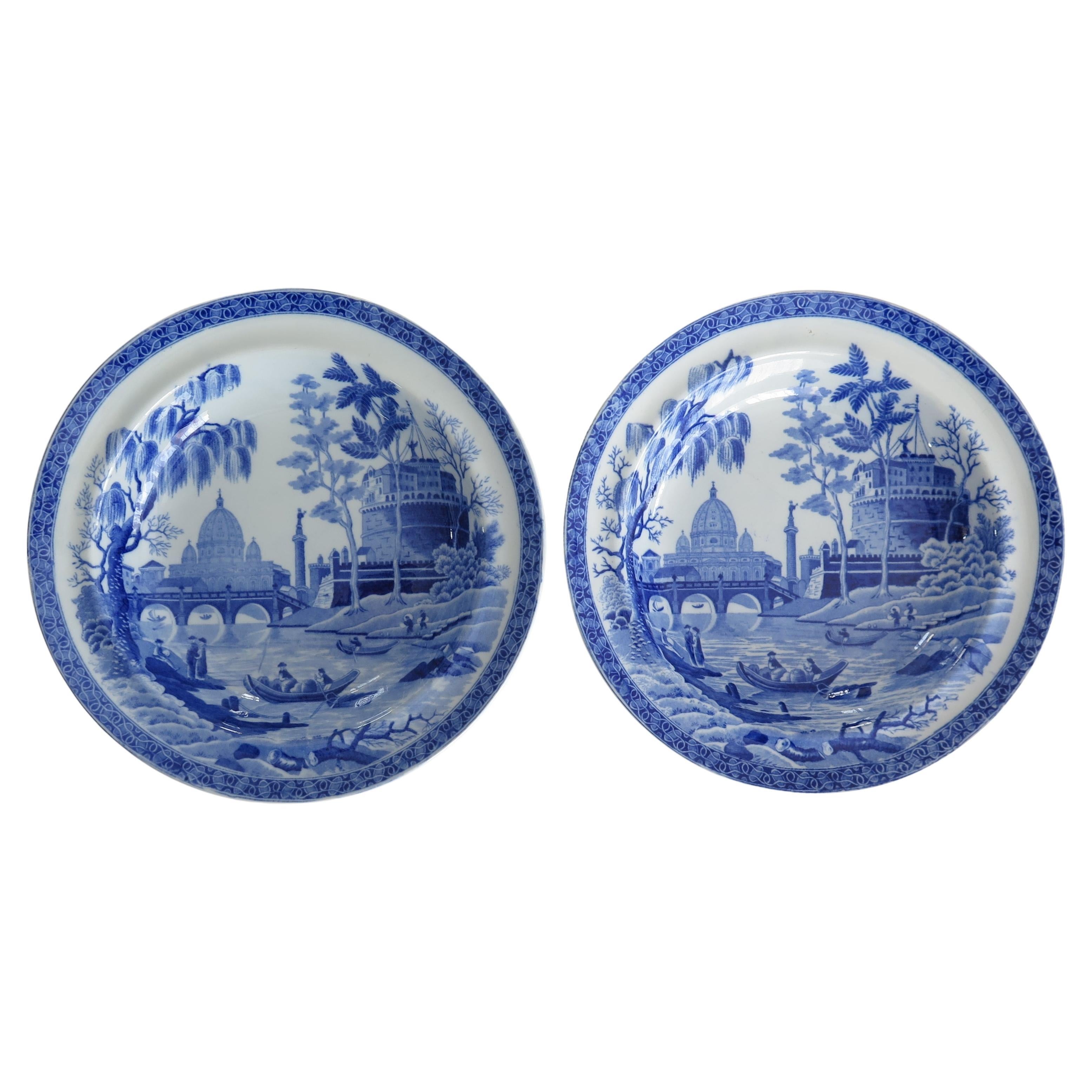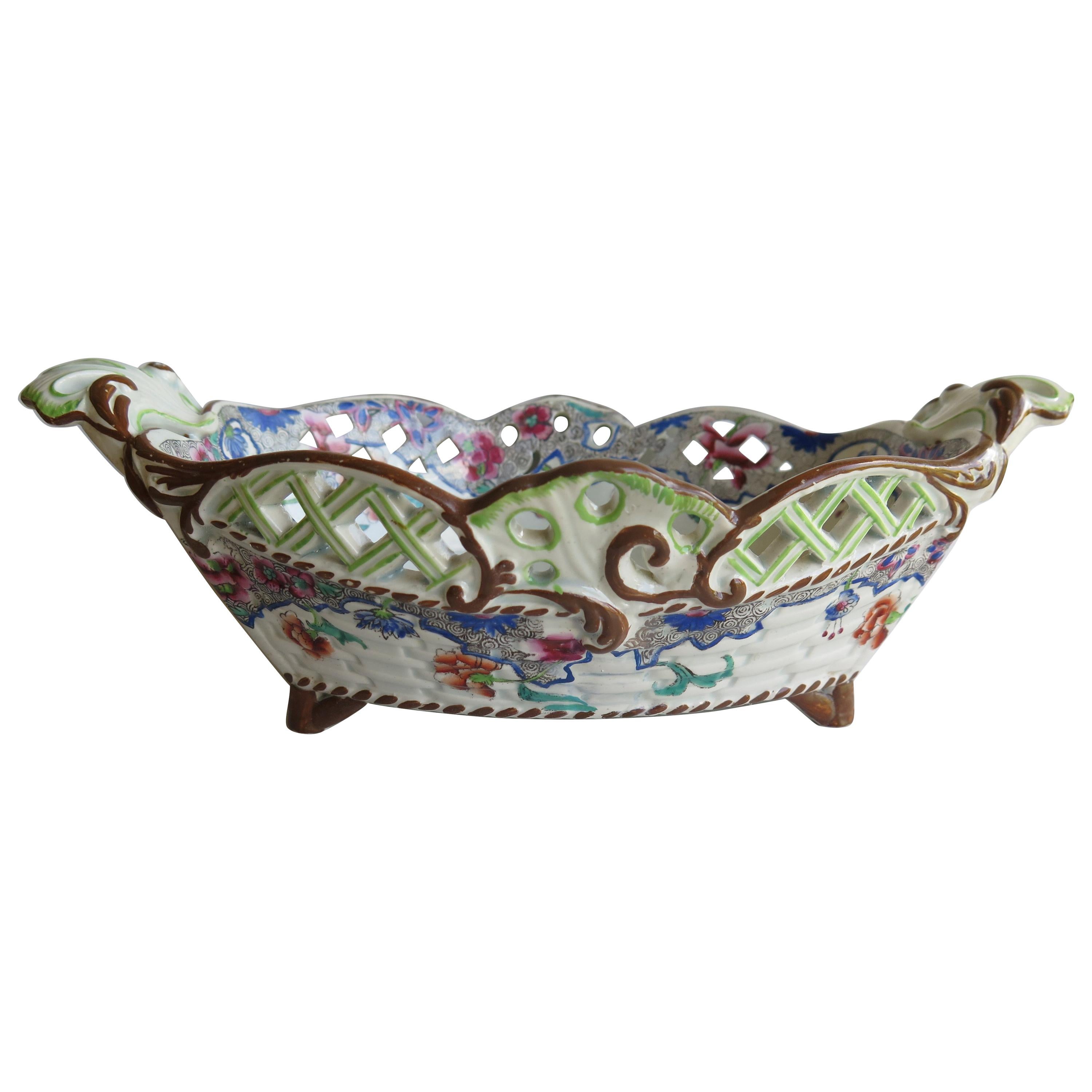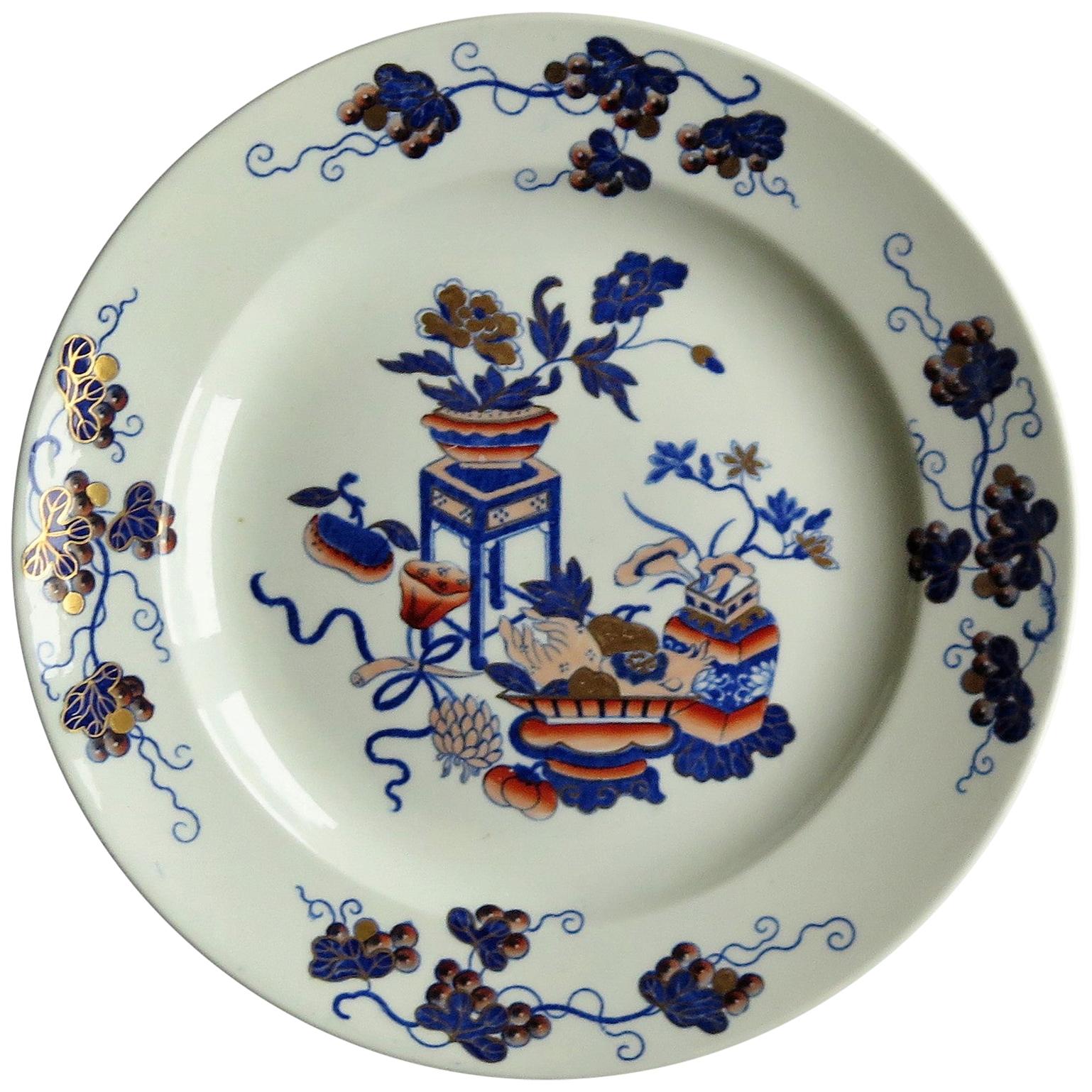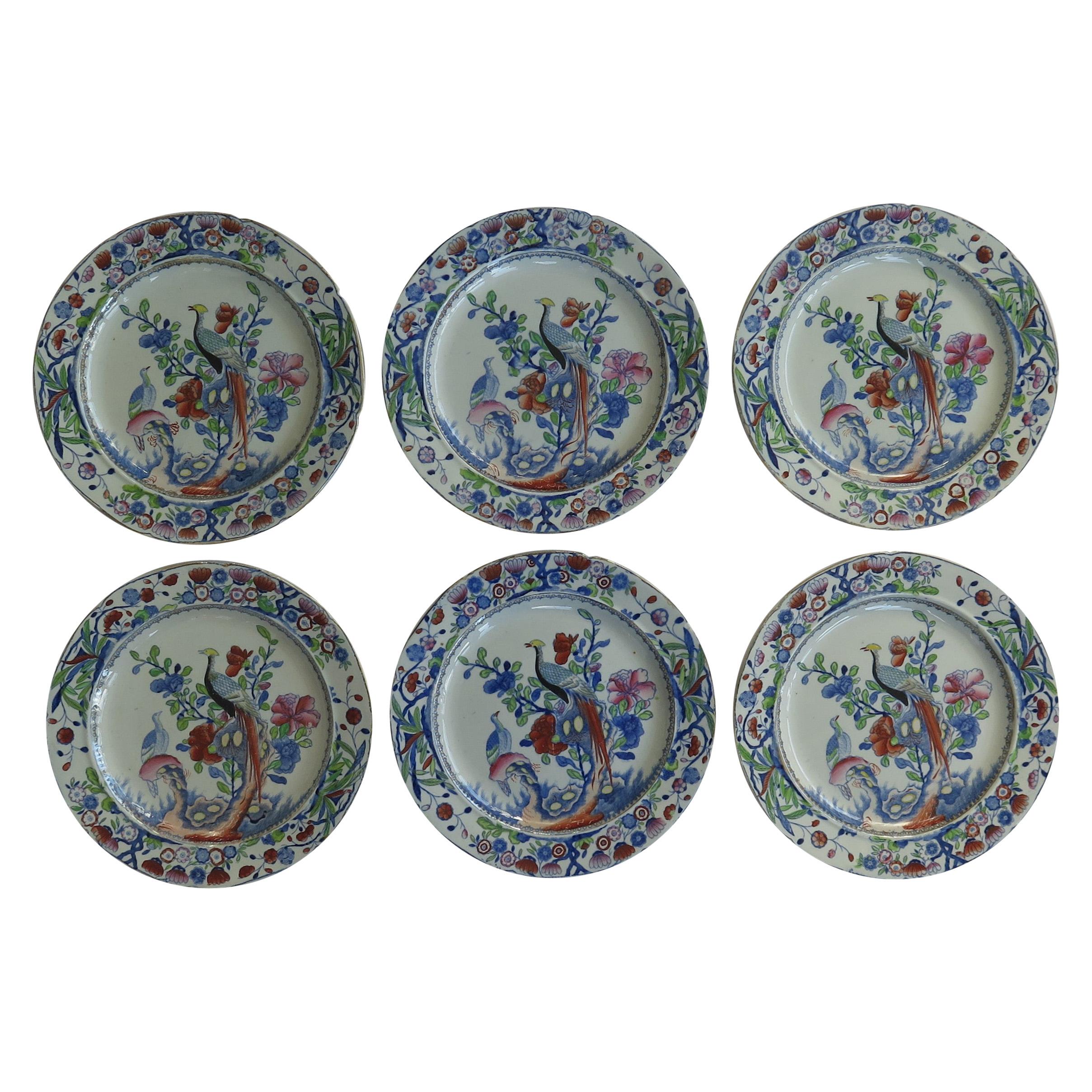Items Similar to Early Coffee Cup Blue and White Boy on a Buffalo Ptn probably Spode, circa 1790
Video Loading
Want more images or videos?
Request additional images or videos from the seller
1 of 22
Early Coffee Cup Blue and White Boy on a Buffalo Ptn probably Spode, circa 1790
About the Item
This is a good, very early, rare blue and white coffee cup in the "Boy on a Buffalo" pattern, probably from the factory of Josiah Spode, stoke on Trent, Staffordshire, England, made in the late 18th century, George 111 period, circa 1790.
The coffee cup is made of earthenware pottery and is vertically fluted with a wavy rim and a distinctive handle which has a sharp inward kick and is vertically grooved on either side.
It is decorated in the printed blue transfer pattern called "Boy on a Buffalo" consistent with the chinoiserie influence of the time. There is also a nice border pattern to the inner rim and the rim and outer handle have hand gilded detail.
An image of an identical cup is shown in Plate 94, page 16, of Michael Berthoud's definitive book titled; A Compendium of British Cups, published by Micawber. However this pattern was produced by other makers at the time and it is hard to be definite regarding our Spode attribution.
The base is unmarked as was often the case at this period but it does have an under-glaze blue circle around the inner base rim and probably a painter or gilders line and dot mark.
Overall a rare 18th century cup in a distinctive pattern.
- Creator:Josiah Spode (Manufacturer)
- Dimensions:Height: 2.5 in (6.35 cm)Width: 3.25 in (8.26 cm)Depth: 2.38 in (6.05 cm)
- Style:Chinoiserie (Of the Period)
- Materials and Techniques:Earthenware,Glazed
- Place of Origin:
- Period:
- Date of Manufacture:circa 1790
- Condition:Wear consistent with age and use. Overall Very Good for its age. Two slight old short glaze hairlines from the rim ( hard to see) and one tiny rim nibble. Glaze crazing. NO Restoration.
- Seller Location:Lincoln, GB
- Reference Number:
About the Seller
5.0
Platinum Seller
These expertly vetted sellers are 1stDibs' most experienced sellers and are rated highest by our customers.
Established in 1993
1stDibs seller since 2013
1,257 sales on 1stDibs
Typical response time: <1 hour
Associations
LAPADA - The Association of Arts & Antiques Dealers
- ShippingRetrieving quote...Ships From: Lincoln, United Kingdom
- Return PolicyA return for this item may be initiated within 3 days of delivery.
More From This SellerView All
- Early Spode Creamware pottery Pierced Chestnut Basket, English circa 1825By Josiah SpodeLocated in Lincoln, LincolnshireThis is a rare Creamware pottery Chestnut Basket made by the SPODE factory, Stoke on Trent, Staffordshire, England, in the late Georgian, Regency period...Category
Antique Early 19th Century English Georgian Ceramics
MaterialsCreamware
- Georgian Plate by Spode in Gilded Bow Pot Pattern Number 2954, circa 1820By Josiah SpodeLocated in Lincoln, LincolnshireThis is a beautiful plate in the Bow Pot pattern, produced by the Spode factory and made of a type of earthenware pottery called Pearl-ware, in the early 19th century, circa 1820. ...Category
Antique Early 19th Century English Chinoiserie Pottery
MaterialsPearlware
- Georgian PAIR Soup Bowls by Spode in Blue & White Rome or Tiber Pattern, Ca 1815By Josiah SpodeLocated in Lincoln, LincolnshireThis is a beautiful pair of deep plates or Soup Bowls in the blue and white Rome or Tiber Pattern, produced by the Spode factory and made of a type of earthenware pottery called Pear...Category
Antique Early 19th Century English Georgian Pottery
MaterialsPearlware
- Set of Six Early Mason's Ironstone Side Plates Oriental Pheasant Ptn, circa 1818By Mason's IronstoneLocated in Lincoln, LincolnshireThis is a Georgian set of six matching Mason's ironstone plates, all in the Oriental Pheasant pattern and dating to the earliest period between 1813-1820. Sets of early plates in...Category
Antique Early 19th Century English Chinoiserie Ceramics
MaterialsIronstone
- Clarice Cliff Cup and Saucer Rare Pine Grove Bizarre Ptn Art Deco, Circa 1935By Clarice CliffLocated in Lincoln, LincolnshireThis is a cup & saucer duo in the rarely seen, hand painted "Pine Grove" Pattern by the renowned Art Deco designer Clarice Cliff. This piece dates to the late Bizarre period, Circa 1935. The Pine Grove Pattern was Newport pattern 6449, having boldly drawn black, blue and green fir trees with orange/red trunks, the whole design then covered in thin grey, blue & green bands. This pattern is rarely seen but has the distinctive "Clarice" look of the early Bizarre pieces. The cup has the Bizarre black printed stamp on the base and the saucer has the Wilkinson's honey-glaze mark, all fully documented in the book ; Clarice Cliff The Bizarre Affair, written by Leonard Griffin and Louis K. and Susan Pear Meisel...Category
Early 20th Century British Art Deco Pottery
MaterialsPottery
- Georgian Spode Large Bowl Ironstone Chinoiserie Ptn No.3875, Circa 1820By Josiah SpodeLocated in Lincoln, LincolnshireThis is a very decorative large bowl, produced by the Spode factory, circa 1820. The bowl is circular with an everted rim and on a raised pedastal foot. This is pattern number 3875, the chinoiserie decoration being transfer printed in cobalt blue under-glaze, then carefully and beautifully hand-painted in bold colored enamels with additional gilding over-glaze. The pattern shows a large Jardiniere beside a vase, both holding colourful flowers beside a tree, all in a garden setting with a distinctive floral border. The pattern is on the inside and outside of the bowl with hand gilded gold highlights. The pattern is in the Chinese taste as produced by many of the English potteries of the time, to compete directly with the large import of Canton or Chinese export porcelain from China. The bowl is fully marked to the base, with "Spodes New Stone...Category
Antique Early 19th Century English Chinoiserie Ceramics
MaterialsIronstone
You May Also Like
- Early Spode Red Greek Pattern TileBy Spode, Josiah SpodeLocated in Fort Lauderdale, FLA Neoclassical red transferware tile made by Spode 1806-1810, with the ‘Refreshments for Phliasian Horseman’ pattern. Sir William Hamilton’s Collection of Etruscan, Greek and Roman antiquities, first published in 1766 by Pierre d’Hancarville, was a landmark publication in English design. It intended to disseminate the Antique style through its engravings of Attic pottery. The catalog’s faithful reproductions of Classical vases led British potteries, including Spode, to adapt or even copy the ancient art for modern life. These Spode Greek pattern tiles reflect the major influence of Hamilton’s catalog on English Neoclassicism. The central scene was taken directly from the catalog. This tile can be dated to a narrow window of production in the Spode factory, 1806-1810. During that time, Spode used a technique known as the “Pluck and Dust” method to print in red transfer designs onto creamware. Using this method, source prints were transferred overglaze using tissue imprinted with a very faint rendition of the design outlined in sticky oil. The decorator applied the tissue to the object then carefully “plucked” or pulled it away, leaving the sticky oil design behind. Then, a finely-ground enamel color was “dusted” onto the surface, sticking to any areas that had the oil. A final firing at a low temperature in the enamel kiln made the pattern permanent. The Pluck and Dust technique improved upon bat-printing and enabled larger designers to be transferred. It was short-lived, however, as under-glaze transfer printing soon took over as the preferred method for producing transferwares. Dimensions: 5 in. x 5 in. x 1/4 in. Condition: Excellent. Slight chip to the upper left corner measuring approximately 0.9 cm. in length. Provenance: The Collection of Nancy and Andrew Ramage Jonathan Horne...Category
Antique Early 19th Century English Neoclassical Pottery
MaterialsEarthenware, Creamware
- Black Basalt Teapot with Enamel Decoration, Probably Spode C1800By Josiah SpodeLocated in Melbourne, VictoriaGlobular teapot in black basalt, painted with matt white, red and ice blue. Judging by the shape and general appearance, probably by Spode, in imitation of Wedgwood designs of the pe...Category
Antique Late 18th Century English Neoclassical Ceramics
MaterialsStoneware
- Mid-Century Ceramic Pitcher and Set of Drinking Cups by Jacques Blin, circa 1950By Jacques BlinLocated in London, GBMid-century French ceramic pitcher set with four cylindrical drinking cups by Jacques Blin (circa 1950s). To find an intact set such as this is rare and certainly fortuitous. An eleg...Category
Vintage 1950s French Mid-Century Modern Ceramics
MaterialsCeramic
- Bone China Tea Cup and Saucer with Monochrome Print, Made in Stoke-on-trentBy CusthomLocated in London, GBA section of the Palladian motif artfully and elegantly frames the rim of this soup bowl. The composition expresses a fully-formed Palladian window, t...Category
2010s English Modern Ceramics
MaterialsCast Stone
- Early 19th Century Spode Red Greek Pattern TileBy Spode, Josiah SpodeLocated in Fort Lauderdale, FLA Neoclassical red transferware tile made by Spode 1806-1810, with the ‘Zeus in His Chariot’ pattern. Sir William Hamilton’s Collection of Etruscan, Greek and Roman antiquities, first published in 1766 by Pierre d’Hancarville, was a landmark publication in English design. It intended to disseminate the Antique style through its engravings of Attic pottery. The catalog’s faithful reproductions of Classical vases led British potteries, including Spode, to adapt or even copy the ancient art for modern life. These Spode Greek pattern tiles reflect the major influence of Hamilton’s catalog on English Neoclassicism. The central scene was taken directly from the catalog. This tile can be dated to a narrow window of production in the Spode factory, 1806-1810. During that time, Spode used a technique known as the “Pluck and Dust” method to print in red transfer designs onto creamware. Using this method, source prints were transferred overglaze using tissue imprinted with a very faint rendition of the design outlined in sticky oil. The decorator applied the tissue to the object then carefully “plucked” or pulled it away, leaving the sticky oil design behind. Then, a finely-ground enamel color was “dusted” onto the surface, sticking to any areas that had the oil. A final firing at a low temperature in the enamel kiln made the pattern permanent. The Pluck and Dust technique improved upon bat-printing and enabled larger designers to be transferred. It was short-lived, however, as under-glaze transfer printing soon took over as the preferred method for producing transferwares. Dimensions: 5 in. x 5 in. x 1/4 in. Condition: Excellent. Provenance: The Collection of Nancy and Andrew Ramage Jonathan Horne...Category
Antique Early 19th Century English Neoclassical Pottery
MaterialsEarthenware, Creamware
- Robert Picault Set of 6 CupsBy Robert PicaultLocated in Chicago, ILRobert Picault set of 6 cups.Category
Mid-20th Century French Mid-Century Modern Ceramics
MaterialsCeramic
Recently Viewed
View AllMore Ways To Browse
Antique White Ceramics
Blue And White Cups
Spode Antique Ceramics
Antique Staffordshire Pottery Pottery And Glass
Antique Staffordshire Pottery And Glass
Antique Spode Patterns
Spode Antique Patterns
Antique Coffe Cups
Antique Coffee Cups
Antique Coffee Cup
Antique Coffe Cup
British Ceramics And Pottery
Blue Coffee Cup
Spode Plate
Blue And White Plates England
Silver Plated Coffee With Cups
18th Century Boy
Antique Glass Coffee Maker





